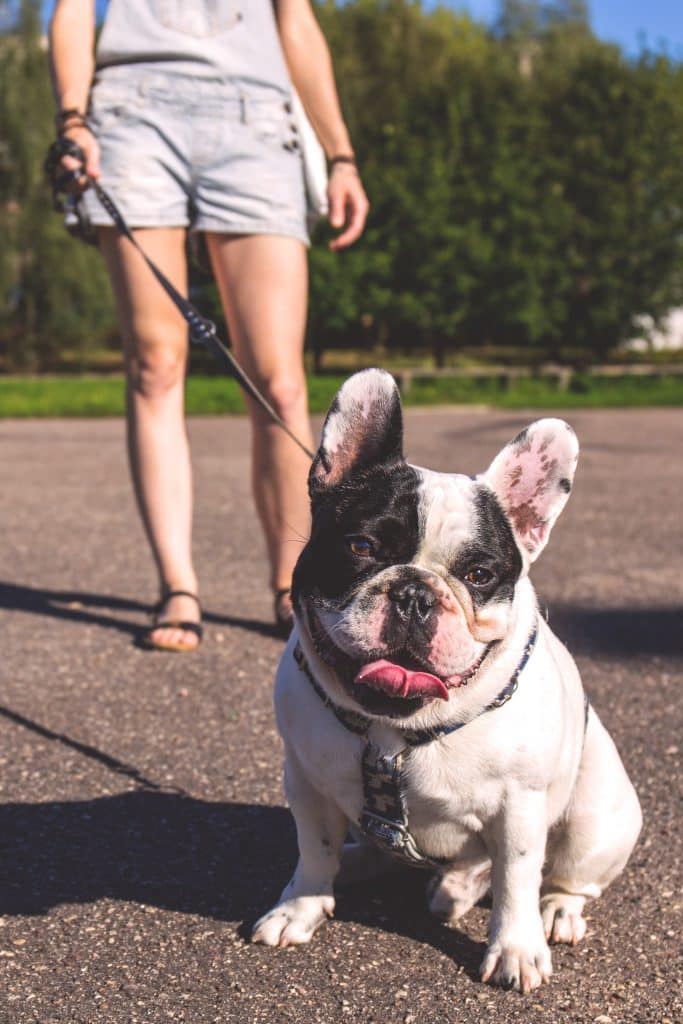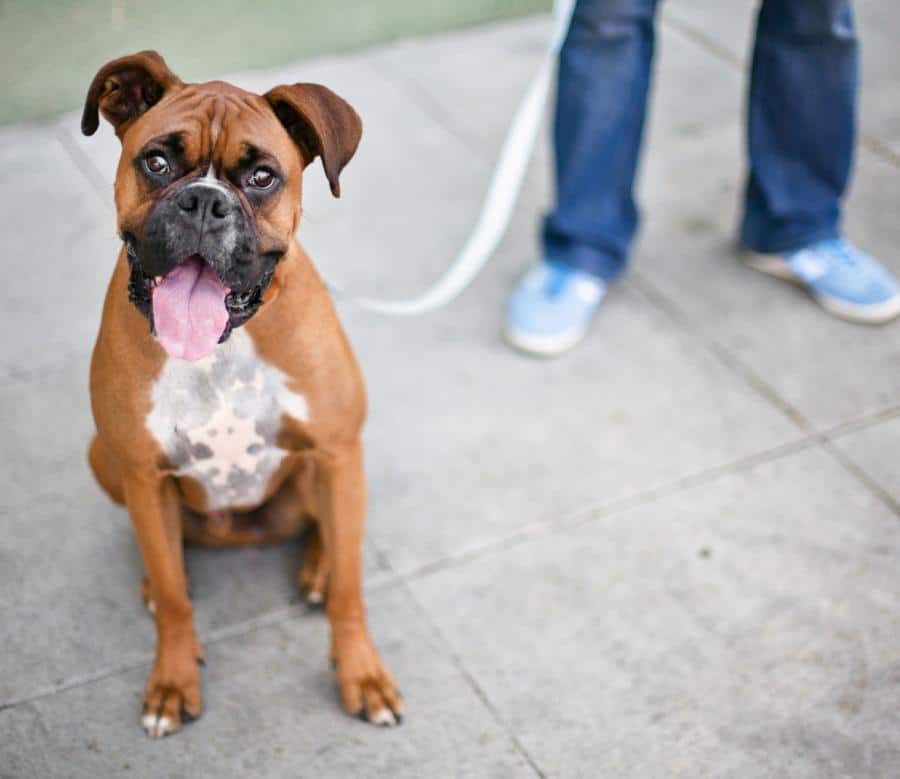Leash Training Basics
One of the first things to do while leash training your dog is to put aside all prejudgements when it comes to dog behavior. There is a misconception that dogs who pull while walking on a leash are trying to be in “control” or “alpha” over their owner. That thought process can be harmful to the training process and can create barriers during training.
With positive reinforcement training, you can look at the more simple reason why a dog may be pulling: they have never been taught the behavior you want from them, the outdoors is exciting and can be overstimulating, and there are many things to explore!
A leash can be frustrating for a dog at first. They aren’t able to roam freely, explore what they want to explore, and smell what they want to smell. Being on a leash prevents a dog from acting as they normally would so patience in the training process is very important. Teaching a dog how to properly walk without any painful measures (like prong collars, shock collars, excessive yanking, or pulling) is incredibly important to make the process as smooth as possible.

Recommended Equipment
Some dogs do well with a regular flat collar and leash. If you have a dog that may back out of a flat collar, you may want to fit your dog with a martingale collar. However, if your dog is pulling excessively, the pressure from the collar could be damaging to their throat and trachea. Other walking tools might be a good place to start your leash-led journey together.
A Chest Harness is a great tool to take pressure off of a dog’s neck and throat. It evenly distributes pressure around their body and adds stability to the walk. Harnesses that link to the front can help with excessive pullers as it will guide their body to the side and give them less leverage to pull you.
Head Halti or other forms of head collars can be very helpful if your dog is an excessive puller. Whenever a dog pulls forward it will automatically bring their head around and prevent them from being able to pull forward. If you choose to use a head collar of any variety make sure to start with slow introductions for short periods of time in your home before venturing out into the public. These collars can take an adjustment period and slow starts will make you and your pet more comfortable. It is recommended to also have a flat collar or martingale collar in conjunction with the head collar for additional safety.
Prong Collars and Shock Collars West Valley Humane Society does not agree with or support the use of prong or shock collars while training your pet. Positive reinforcement training allows for force-free training that promotes a positive relationship between you and your dog. Any device that causes pain harms the relationship between you and your pet, can lead to discomfort, and may cause behavioral concerns down the road.
How to get started
Stop and Wait
Sometimes, in our efforts to curb a behavior, we can accidentally reinforce it. If you are getting over-excited yourself (yelling, sudden movements, etc) you can be harming the situation more than helping. Whenever your dog pulls in any direction, try stopping and waiting. Removing the excitement from the situation is sometimes all that is needed to refocus the energy on the walk itself. Once the leash relaxes and your dog focuses again you can try walking again. This process can take time and patience and consistency is key!
Reversing Direction
Another technique you can use is to turn and walk in the opposite direction from whatever is stimulating your dog. Any time your dog is going in a direction that is not part of your walking path you can face the direction you came and start walking back.
Using a cue like “let’s go” or “come on” can help give a verbal cue to the action that is about to happen. This can help to recenter your dog while walking. Rather than yanking or using forceful methods, try giving treats to encourage your dog to follow your lead.
Once the leash is relaxed, or you are successfully walking in the opposite direction, you can turn back and continue on your way. This process can take a few tries but between your cues, treats, and consistency of not being able to move forward with their behavior, your dog will catch on quickly!

Make yourself exciting
One way to keep your dog focused on you during walks is to give them an incentive to follow your lead. Teaching your dog “look at me” and getting a treat reward for looking up at you can help your dog remain focused on you. Having a firm set of recalls (like “look at me” or “let’s go”) can be really important when going into unknown environments.
Another way to have your dog stay focused on you while walking is to be unpredictable in your walking patterns. If your dog doesn’t know where you are going to turn next they are going to be more likely to follow your lead. Try turning in odd directions or reversing direction but going towards the dog rather than away. Always use praise and treats to reward them for doing well at following.
Goals
Your goal is to reward your pet for the positive relationship you are building. Rewarding your dog for following instructions, walking well on a leash, staying by your side will only help guarantee that behavior will happen again in the future. Using punishing methods can harm the trust in your relationship and confuse your dog as they are trying to learn a new skill.